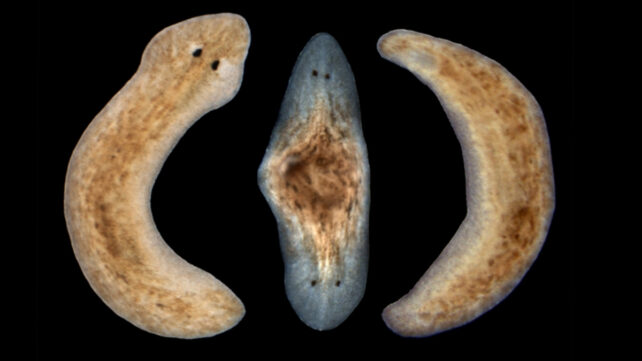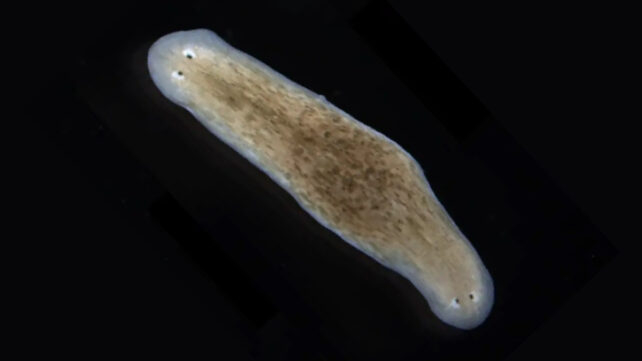Flatworms are infamous in biology labs for their surreal ability to regenerate heads when you decapitate them. Now, researchers have discovered that an odd developmental defect can cause them to grow heads at both ends – and it only gets weirder from there.
The extraordinary regenerative abilities of some species of flatworms defy belief. Chop them in half, and you'll end up with two whole flatworms, as each piece grows a new head, tail, or whatever else is missing. They're like miniature mythological Hydras.
Past research revealed an electrical current can determine if their regrowth at a certain point will be head or a tail, allowing scientists to create two-headed or two-tailed flatworms.
Related: Scientists 'Induce' Flatworms to Grow Heads And Brains of Other Species
Or however the heck many heads this poor monstrosity ended up with.
Now, scientists have found that a two-headed variation can occur naturally as well. And when they cut them into pieces, their body axis seemed to become twisted.
University of Warsaw zoologists Katarzyna Tratkiewicz and Ludwik Gąsiorowski made the discovery in Stenostomum brevipharyngium, a species of flatworm that reproduces asexually by growing a clone out of themselves.
Usually, this starts with a new head budding out from the center of the parent body, followed by the rest of the newly forming organism. But in some cases, the researchers found, rather than a tail forming at the end, another head emerged instead.

Most remarkably, when the researchers cut the two-headed mutants into sections, both heads regenerated tails at the other end, complete with fully functioning reproductive organs. That meant that in some of the descendants, their heads and tails had effectively swapped ends, according to their original body axis.
"Effectively, such regeneration allows stable reversal of the body axis polarity without impairment of the survival or reproductive abilities of the animal," the researchers write in their paper.
As a result, a good chunk of the cells in that upside-down flatworm's middle section had a different axis orientation than the cells at either end of the animal.
You'd think that would make for a heck of a confused nervous system, let alone anything else. Yet still, somehow these strange creatures can pull this off. It probably helps that they both eat and 'poop' through the same, single digestive hole.
Further examinations revealed that the upside-down-orientated flatworm reproduced normally, indicating that the double-headed error was not a heritable mutation.
The researchers suspect the flatworm's capacity for continuous tissue renewal, involving adult cells that retain their stem cell abilities to divide into any type of body cells (pluripotent), allows them to survive such a dramatic change in body orientation.
"The fact that the worms were able to resume normal physiology, despite reversal of those vital organ systems in relation to their heads, points towards extreme physiological [flexibility] of their body plan," Tratkiewicz and Gąsiorowski explain.
"Such flexibility might be related either to relative simplicity of their organs or to the ability to dynamically remodel the tissues, due to the presence of the pluripotent stem cells."
This research was published in the Proceedings of the Royal Society B: Biological Sciences.

